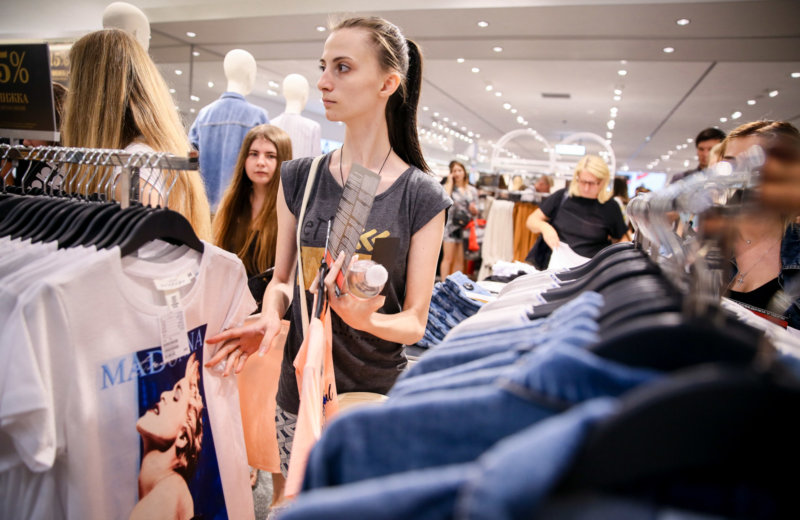The retail market is gaining momentum in Ukraine.
Over the first two months of the year, retail trade turnover in Ukraine hit $5.5 billion, or 6.8 percent more than during the same period in 2018, according to a report published by Ukraine’s State Statistics Service on March 22. In February, the growth was even higher –$2.7 billion, 7.2 percent more than a year ago.
Ivan Zaitsev, the Association of Retailers of Ukraine portal’s Chief Editor, says it’s truly positive trend for Ukraine –real incomes grew by 9.8 percent year-on-year, three percent faster than retail turnover.
“For the first time in a long time, the main stimulus for the growth of retail turnover was not inflation, devaluation of the hryvnia, but an increase in the people’s purchasing power, even taking into account the growth in utility costs,” told Zaitsev the Kyiv Post.
The highest retail growth occurred in Zakarpattia Oblast, reaching 14.6 percent year-over-year, Kyiv Oblast – 11.1 percent, and Vinnytsia Oblast – 10.1 percent, according to Concorde Capital investment firm.
It was slowest in the Volyn Oblast (0.7 percent), Chernihiv Oblast (1.6 percent) and Kirovohrad Oblast (2.6 percent).
According to Concorde Capital’s Evgeniya Akhtyrko, in Ukraine retail growth was buoyed by high consumer demand and individual income growth – mainly in wages. In addition, inflation cooled down, helping the retail market to grow further in February.
But the figures don’t look so good when compared to January nine years ago, when retail turnover was 4.4 percent higher than in 2019, according to Ukraine’s retail association.
Russia’s war against Ukraine over the past five years is the obvious reason for the decline. The number of retailers has plummeted since the Russian aggression started.
In 2013, before the EuroMaidan Revolution, the number of both wholesale and retail companies was 112,243. Just in three years, the number decreased by a quarter, to 83,120, according to the retail association.
Since then, Ukraine’s retail market has slightly recovered, reaching 94,732 companies in November 2018, but this is still far from a full recovery.
Purchasing power
And the purchasing power of Ukrainians, though also recovering, is still low compared to that of other European customers.
On average, Ukrainians spent almost half of their income on food in 2018, 5.6 percent on clothes and footwear, and only 1.4 percent on vacations, according to Ukraine’s state statistics agency.
In comparison, in Germany people spend only 10.6 percent of their income on food, in France – 13.2 percent, and in the United Kingdom – 8.2 percent, according to a Eurostat report.
In addition, 14 million Ukrainians, or almost 34 percent of the total population, last year received a monthly income less than the actual living minimum of Hr 3,261, or $120, according to Ukraine’s State Statistics Service.
The minimal wage in the country is only $135 per month, which is 13 times lower than in Germany, 12.7 times less than in France, and 4.3 times less than in neighboring Poland.
However, Zaitsev has some doubts about Ukraine’s official wage statistics.
“A significant part of the income of Ukrainians remains in the shadows, so in reality their incomes might differ significantly from the official ones. In general, the growth of real incomes of Ukrainians in 2018 outpaced the growth in retail turnover,” said Zaitsev.
Over the past two years, big international brands like Zara Home, Decathlon, H&M, Koton, and DeFacto have entered the Ukrainian retail market.
But not every Ukrainian can afford to shop at these outlets: For example, a photo frame from a Zara Home shop in Kyiv costs around $33, while pajamas can cost $66.
But in Ukraine, the target audience of such retailers is clearly marked – young active residents of cities with million-plus populations, according to Zaitsev.
“The residents, for example, of Konotop, Sumy or Zhmerinka (a village in Vinnytsia Oblast), will of course not be buyers of these brands. But if we’re talking about Kyiv, Odesa, Dnipro, Lviv, or Kharkiv – then the number of potential customers is quite large,” he said.



